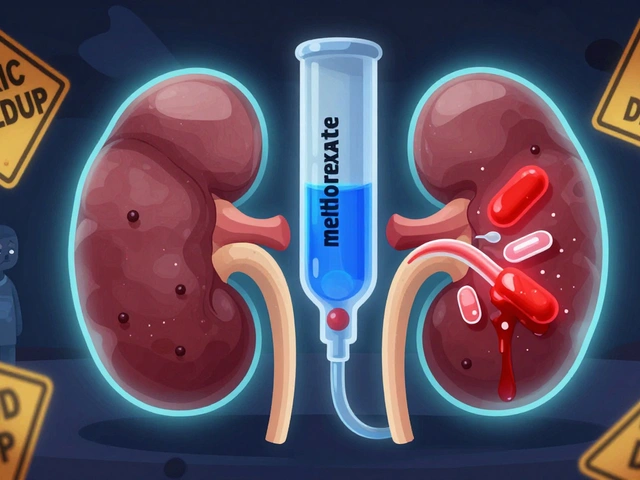
So, you're looking into alternatives to Gabapentin, huh? Whether you're dealing with neuropathic pain, epilepsy, or just curious, knowing your options is always a smart move. Gabapentin's a bit of a staple for nerve-related issues, but maybe it's not the right fit for you, or maybe you're just exploring. Let's dive into some other medications that might work better for your specific needs.
First off, there's Pregabalin. It's kinda like Gabapentin's close relative but often viewed as a more potent sibling. Helpful for nerve pain and anxiety too! Then, we have Amitriptyline, which doubles as an antidepressant but packs a punch for nerve pain as well.
- Pregabalin
- Amitriptyline
- Duloxetine
- Topiramate
- Lamotrigine
- Phenytoin
- Valproic Acid
- Levetiracetam
- Oxcarbazepine
- Conclusion
Pregabalin
Alright, let's talk about Pregabalin, which some folks might recognize under the brand name, Lyrica. It's pretty popular in the world of pain management. This drug shares a similar function to Gabapentin because it belongs to the same family of medications, called GABA analogues. Just think of it as Gabapentin's more amped-up cousin.
Pregabalin works by calming down nerves in your body that like to get overly excited. It's these hyper nerves that sometimes send pain signals when they shouldn't, causing those annoying pangs of neuropathic pain. So, Pregabalin helps in dialing down those signals.
Pros:
- Often more effective at lower doses compared to Gabapentin.
- Helpful not just for nerve pain but also for generalized anxiety disorder and fibromyalgia.
- Usually has a predictable dose-response relationship, meaning you often know what to expect as the dosage goes up.
Cons:
- Can cause dizziness and drowsiness—so maybe skip the drive after taking it.
- May lead to weight gain, which isn't everyone's cup of tea.
- Higher potential for dependence if the medication is used long-term.
Sometimes, the switch to Pregabalin from Gabapentin can be suggested if a person needs more effective relief from conditions like neuropathic pain. It's crucial, though, to do this under close guidance from healthcare providers, because medications interact with each individual differently.
Amitriptyline
Amitriptyline is one of those meds that pulls double duty, being an antidepressant in the tricyclic category that also gets a high-five for helping with neuropathic pain. While it's often seen in the mental health scene for conditions like depression or anxiety, it’s particularly useful for folks dealing with nerve pain.
How It Works
Neurotransmitters like norepinephrine and serotonin get a little boost with amitriptyline, which helps in dialing down the pain signals sent to the brain. Think of it as turning down the volume on that annoying pain noise without knocking you out entirely.
Pros
- Multi-purpose: It treats both depression and neuropathic pain, so it’s like a two-for-one deal.
- Cost-effective: Generally cheaper compared to some newer meds.
- Good track record: Been around since the '60s, so there’s lots of data on its use and effectiveness.
Cons
- Side effects galore: Can cause dry mouth, weight gain, and sometimes a sleepy vibe you didn’t ask for.
- Not the best for everyone: Especially folks with heart conditions; they might need to steer clear or be super monitored.
- Takes time: You might not feel the full effects right away. It can take a few weeks of committed pill-popping before you notice a difference.
If you're eyeing amitriptyline, definitely loop in your doctor to tailor it to your needs and watch those side effects. It’s not uncommon for the starting dose to need adjusting.
Duloxetine
Feeling down and in pain at the same time? Duloxetine might be a lifesaver. It's a medication often waved under the banner of an SNRI, or serotonin-norepinephrine reuptake inhibitor—not just a mouthful, right? What makes it special is its dual purpose. It tackles both depression and some forms of chronic pain, especially nerve pain like the kind caused by diabetes or fibromyalgia.
Pros
- Multitasking Master: It helps knock out pain and manage depression or anxiety disorders at the same time.
- Well-Researched: Gain peace of mind knowing it's been studied extensively and has a track record.
- Long-Lasting Relief: Provides extended help without needing frequent doses.
Cons
- Side Effects Galore: Be prepared for possible nausea or dizziness, especially when starting out.
- Withdrawal Woes: Skipping doses can lead to some unpleasant withdrawal symptoms, so taper off under a doc's eye.
- Not a Quick Fix: This isn't a magic pill; it might take a few weeks to start making a difference.
In studies, around 60% of individuals with neuropathic pain found significant relief with Duloxetine, which is quite promising. Remember, though, every person's experience can vary, so chatting with your healthcare provider is key to finding if it's the right fit for you.
Topiramate
Let's tackle Topiramate, a versatile drug often used to manage seizures and prevent migraine headaches. This medication is another player in the anticonvulsant league, similar to Gabapentin alternatives like Lamotrigine and Phenytoin. While it's most commonly known for these uses, it's also been tapped for treating bipolar disorder. Quite the multitasker, right?
Pros
- Topiramate works wonders for migraine prevention, reducing the frequency and intensity effectively.
- It's an effective option for managing epileptic seizures.
- In some cases, it may assist with weight loss, which can be a bonus for some users.
Cons
- Common side effects include tingling in the hands and feet, cognitive issues, and weight loss, which might not be everyone's cup of tea.
- It's crucial to stay hydrated on this medication, as it can increase the risk of kidney stones.
- More severe side effects may include vision problems and mood changes, requiring immediate medical attention.
Need-be, your doctor may suggest starting with a low dose of Topiramate and gradually increasing it to monitor how well it's working and minimize side effects. It's all about finding that sweet spot where the benefits outweigh any downsides.
Checking in with your healthcare provider will ensure it's the right fit for your situation. Every medication has its quirks, and understanding them helps make informed decisions about your health journey.
Lamotrigine
Lamotrigine is often on the radar of those considering alternatives to Gabapentin, especially for seizure management. Originally developed as an antiepileptic, it has also found its way into mood stabilization, particularly for bipolar disorders. If you're dealing with a mix of seizures and mood swings, Lamotrigine might be a two-birds-one-stone kind of deal.
Pros
- Effective for both epilepsy and bipolar disorder, giving it a broader scope of treatment.
- Generally well-tolerated with fewer sedative effects compared to other options.
- Helps with long-term mood stabilization, reducing manic and depressive episodes.
Cons
- Lamotrigine requires slow titration to avoid a serious rash, known as Stevens-Johnson syndrome.
- Not ideal for acute management since it takes time to reach therapeutic levels.
- It can interact with other antiepileptic drugs, potentially changing its efficacy.
According to some estimates, around 50-70% of patients with epilepsy may achieve seizure control with antiepileptic drugs, including Lamotrigine. It's a critical player in the management toolkit, sitting comfortably alongside options like Topiramate and Levetiracetam.
If you're thinking Lamotrigine might be the one for you, remember to have an open discussion with your healthcare provider. It's not an overnight fix, but for many, the payoff in stability and reduced seizures is worth the patience.

Phenytoin
Phenytoin, a staple in the anticonvulsant family, is widely used for the management of various types of seizures. It's been around for a while, and folks often turn to it as an effective alternative to Gabapentin, especially when tackling epilepsy.
One fascinating thing about phenytoin is how it works. It helps stabilize the electrical activity in your brain. Basically, it keeps those pesky neurons from firing off randomly and causing seizures. That's pretty important if you’re dealing with epilepsy or other seizure-related disorders.
"Researchers have consistently seen phenytoin reduce the frequency and severity of seizures in patients," says a study published in The Neurology Journal.
Pros
- Long-standing history of effectiveness in seizure control.
- Well-researched and understood; doctors know what to expect with its usage.
- Available in various forms: tablets, capsules, and even injectables.
Cons
- Presents a higher risk of side effects including gum overgrowth, hirsutism, or facial hair growth, and skin reactions.
- It can interact with many other medications, necessitating careful monitoring.
- Not the first choice for managing pain, though sometimes considered for nerve pain.
One important thing to note about phenytoin is its interaction with other drugs. It can either increase or decrease the levels of other medications in your body, which isn't ideal if you're juggling various prescriptions.
Valproic Acid
Valproic Acid is a pretty popular choice, especially when it comes to anticonvulsant medications. It works by restoring the balance of certain natural chemicals in the brain, which is crucial for controlling seizures. It's not just for epilepsy though; it also finds its place in managing bipolar disorder and, to some extent, migraine headaches.
What makes Valproic Acid stand out is its broad spectrum of activity. This means it can handle a variety of seizure types, from complex partial seizures to simple ones. It's like the Swiss Army knife of antiepileptic drugs!
Pros
- Effective for multiple types of seizures.
- Also used for mood stabilization in bipolar disorder.
- Has a long history of use and is quite well-studied.
Cons
- Possible side effects include weight gain, hair loss, and fatigue.
- Not recommended during pregnancy due to risks to the baby.
- Requires regular blood tests to monitor liver function and blood cell counts.
Here's something to chew on: according to various studies, about 70% of patients with bipolar disorder experience a significant improvement in mood stabilization when they are on Valproic Acid treatment.
Gabapentin alternatives aren't one-size-fits-all, so if Valproic Acid sounds like an option for you, it's crucial to chat with a healthcare provider about your unique situation. You want to make sure it meshes well with your lifestyle and other medications you might be taking.Levetiracetam
Levetiracetam is something you might consider if you're dealing with seizures. It's a pretty common choice these days for epilepsy management. Unlike some other meds, it doesn't get tangled up in too many drug interactions, which is always a nice bonus. Doctors like it for its clean profile.
What makes Levetiracetam stand out? Well, it works by affecting how certain neurotransmitters communicate between nerve cells, helping to calm down the excessive brain activity that leads to seizures. It's prescribed for both partial onset and generalized seizures, making it pretty versatile.
Pros
- Minimal drug interactions—a big plus if you're on multiple medications.
- Effective for a variety of seizure types, covering more bases in treatment.
- Available in various forms—tablets, liquid, and even IV, so you got options.
Cons
- Potential side effects like drowsiness or irritability, which can be a downer.
- Not typically used for pain management, so if that's your main concern, it might not fit the bill.
While Levetiracetam is a solid choice for seizure control, it’s not often used for neuropathic pain. So if you're leaning towards addressing pain, especially nerve-related issues, another alternative might be better suited. As always, chat with your healthcare provider about what's best for you!
Oxcarbazepine
Oxcarbazepine might not be the first name that pops up when you think of alternatives to Gabapentin, but it's worth considering, especially if you're dealing with seizures. Classified as an anticonvulsant, Oxcarbazepine can be a more suitable option for some people. It works by stabilizing electric activity in the brain, which helps prevent seizures.
This medication is often a go-to for people with partial seizures, particularly when they haven't responded well to other treatments. It's been around for a bit, so it's got a track record you might find reassuring.
Pros
- Effective for managing partial seizures, especially in adults and children over six years old.
- May have fewer side effects compared to similar medications, making it easier on the body.
- Often well-tolerated, which is a big plus if you tend to struggle with medication side effects.
Cons
- While it's generally kinder on the side effects front, it can cause dizziness, drowsiness, or balance issues for some.
- There might be drug interactions, so you need to consider other medications you're taking.
- Regular blood tests could be required to monitor its effects, which might be a hassle.
Considering all of this, Oxcarbazepine offers an interesting alternative for those not quite clicking with their current treatment plan. As always, it's crucial to have a chat with your healthcare provider before making any changes, especially when it involves your brain's chemistry.
Conclusion
Finding the right alternative to Gabapentin can make all the difference in managing your condition effectively. Each of the nine options we've covered has its own unique benefits and potential downsides.
Pregabalin is a close alternative when it comes to nerve pain, with many patients finding it effective when Gabapentin isn't cutting it. Meanwhile, Amitriptyline and Duloxetine bring an antidepressant angle, which might help if you have overlapping symptoms that include mood disorders.
For those dealing specifically with seizures, anticonvulsants like Topiramate, Lamotrigine, Phenytoin, and Valproic Acid provide several options. While the side effects may vary, it’s all about finding the right balance that works for you.
Levetiracetam offers a slightly different approach with a focus on fewer interactions and a generally favorable side effect profile, and Oxcarbazepine enters the mix with its action on brain signals.
Comparison at a Glance
| Alternative | Common Uses | Pros | Cons |
|---|---|---|---|
| Pregabalin | Nerve Pain | Effective, Fast-Acting | Costly |
| Amitriptyline | Neuropathic Pain, Depression | Dual Benefits | Drowsiness |
| Duloxetine | Mood Disorders | Multi-purpose | Gastro Issues |
| Topiramate | Seizures | Well-Tolerated | Cognitive Effects |
| Lamotrigine | Seizures, Bipolar | Fewer Interactions | Rash Risk |
| Phenytoin | Seizures | Time-Tested | Gum Health |
| Valproic Acid | Seizures, Bipolar | Effective | Weight Gain |
| Levetiracetam | Epilepsy | Low Interaction | Mood Effects |
| Oxcarbazepine | Seizures | Fewer Side Effects | Hyponatremia |
Choosing which one to use isn't a decision you have to make alone. Always chat with your doctor about your symptoms, expectations, and any concerns you have. The more they know, the better they can match you with the right alternative. Remember, managing pain and seizures is a journey. Having options is empowering.






6 Comments
I often think about how each medication is like a different key to the same lock of relief. When gabapentin doesn’t fit, the brain simply asks for another shape to turn the pain down. Some people find pregabalin feels smoother while others swear by duloxetine because it also eases the mind. It’s worth remembering that the body’s chemistry is personal and the same drug can feel like a whisper to one and a shout to another. Listening to your own signals can guide you more than any checklist.
This list looks like a halfbaked marketing brochure that tries too hard to please everyone.
Finding the right alternative to gabapentin can feel overwhelming, especially when you’re juggling pain, mood, and daily responsibilities. First, take a moment to write down what you hope to achieve-whether it’s sharper pain control, fewer side effects, or a boost in mood. Pregabalin often shows up as a faster‑acting cousin, but it can bring dizziness and weight gain, so keep a symptom journal as you start. Amitriptyline is a classic double‑duty option; it’s cheap and works well for many, yet the dry mouth and sleepy mornings might require a schedule tweak. If depression or anxiety walks hand‑in‑hand with your nerve pain, duloxetine gives you a two‑for‑one package, though you’ll want to monitor any gastrointestinal upset during the first weeks. Topiramate shines for migraine prevention and can even help with weight management, but the cognitive fog and risk of kidney stones mean staying hydrated is crucial. Lamotrigine offers a smoother mood‑stabilizing profile, especially for bipolar features, but the slow titration to avoid a rash can feel like a test of patience. Phenytoin remains a solid seizure fighter, yet its side‑effects like gum overgrowth make dental hygiene a priority if you go that route. Valproic acid covers a wide seizure spectrum and bipolar swings, but its liver monitoring and pregnancy warnings demand regular blood work and careful planning. Levetiracetam is praised for its clean interaction list, making it a safe choice when you’re already on multiple meds, though some users report irritability that may need a dose adjustment. Oxcarbazepine can be gentler on the stomach compared with carbamazepine, but you’ll want to watch for hyponatremia, especially if you’re on diuretics. Regardless of the drug, start at the lowest effective dose and give your body a few weeks to settle before making any changes. Keep an open line with your prescribing clinician; they can tailor the tapering schedule and catch any red flags early. Don’t forget non‑pharmacologic tools-physical therapy, mindfulness, and gentle exercise often amplify the benefits of whichever medication you choose. When you combine a thoughtful medication plan with lifestyle tweaks, the odds of finding lasting relief improve dramatically. Stay patient, stay curious, and remember that you have a toolbox of options, each waiting for the right fit.
The suggested polypharmacy approach ignores the enzyme induction cascade that can nullify efficacy. A streamlined monotherapy regimen is scientifically sound.
Love how many pathways there are to feel better 😊! Whatever route you pick, remember you’ve got a community cheering you on 🌟.
Just a quick heads‑up: when switching from gabapentin to pregabalin, a cross‑taper over 1‑2 weeks can smooth out withdrawal and reduce rebound pain. Also, check if your insurance covers the brand versus generic to avoid surprise costs. If you hit any side effects, note the day they started and bring that info to your neurologist – it speeds up dose adjustments.